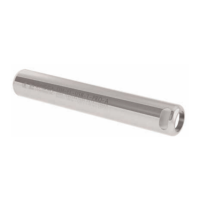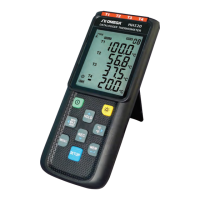Why are the pens not leaving traces on the paper of my Omega CT485B-110V-G-AL Data Loggers?
- TtheresacruzAug 5, 2025
If the pens on your Omega Data Loggers aren't leaving traces, ensure the door is completely closed with the latch button in the uppermost position; you might need to squeeze the case slightly. Also, check that the pens are fresh by testing them on a piece of chart paper, and replace them if necessary. Verify that the pens are locked firmly in their holders and that the pen caps are removed and secured on the cap posts.



